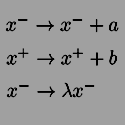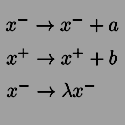When Symmetries Conform to Theories
The study of conformal field theories—quantum field theories, generally defined in two dimensions, invariant under conformal transformations (loosely “shape-preserving”) of spacetime—is the cornerstone of fields as diverse as critical phenomena, black holes, and string theory. There is, by now, a large body of literature devoted to the extraction of detailed physical properties of such conformal field theories based on powerful algebraic methods. The key reason behind the solvability of conformal field theories is that the conformal invariance in two spacetime dimensions implies an infinite number of symmetries, thus severely restricting the physical properties of the theories for which conformal transformations are a preserved symmetry. However, an interesting converse question may be asked. Given a two-dimensional field theory, invariant under a finite number of symmetries, under what conditions can one expect the dynamical system to be conformally invariant?
Writing in Physical Review Letters, Diego Hofman and Andrew Strominger from Harvard University study and partially answer this question. The authors show that given a two-dimensional theory with translational and partial scale invariance—a rather minimal set of assumptions—the requirements of locality, unitarity, and a positive spectrum force the field theory to have an infinite number of additional symmetries. The added symmetries are conformal transformations and generalizations thereof. This powerful conclusion, obtained about a large class of models, is expected to be relevant to diverse areas of physics research, in particular, to the applications of the gauge-gravity duality in condensed matter physics. – Abhishek Agarwal





